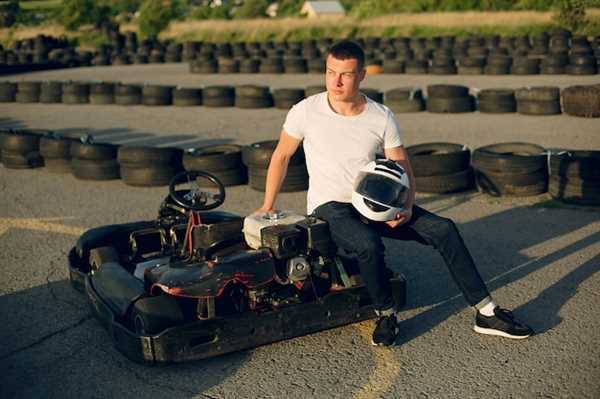
To appreciate the evolution of competition on circuits, focus on the achievements of legendary figures who have left a significant mark in this field. Names like Juan Manuel Fangio, a five-time champion in the 1950s, set an unparalleled standard for excellence with his mastery of speed and strategy. Following his legacy, Ayrton Senna emerged as a symbol of both passion and unmatched skill, captivating fans throughout the late eighties and early nineties.
Consider also Michael Schumacher, whose record-breaking performances in the late 1990s and early 2000s transformed expectations within this challenging arena. His unparalleled drive and determination redefined success, inspiring a new generation of enthusiasts. More recently, Lewis Hamilton has continued this legacy, securing numerous victories and setting milestones that echo throughout racing history.
Exploring these captivating personalities provides insight into not only their individual accomplishments but also the broader narrative of competition over time. Their compelling stories reveal how personal dedication and innovation have shaped races beyond mere entertainment, making them pivotal figures who changed the course of events on tracks worldwide.
Analyzing the Racing Styles of Legendary Drivers

Examine the speed and precision in Ayrton Senna’s technique, characterized by aggressive cornering and exceptional wet weather skills. His ability to maintain control during adverse conditions set him apart as a true virtuoso on the track.
Evaluate Michael Schumacher’s strategy, which combined calculated risk-taking with relentless discipline. His expertise in tire management and racecraft allowed him to dominate with remarkable consistency, often exploiting competitors’ weaknesses at crucial moments.
Consider Juan Manuel Fangio’s smooth and fluid driving style, which emphasized mechanical sympathy and understanding of the car’s limits. His innovative approach to racing lines created a benchmark for others, showcasing the balance between speed and control.
Analyze Sebastian Vettel’s early career, where he demonstrated incredible confidence and aggression, particularly evident in overtaking maneuvers. His ability to adapt quickly to changing track conditions made him a formidable opponent, especially during the qualifying sessions.
Recognize Lewis Hamilton’s versatility and adaptability, allowing him to excel in various vehicle types and conditions. His proactive communication with the team also plays a critical role in refining performance during events, a skill that amplifies his racing prowess.
Investigate the unique karting background of many legends, which instills a deep understanding of vehicle dynamics from a young age. This foundation fosters a strong instinct for on-track decisions, crucial for success in competitive racing environments.
Review how the mental approach of these remarkable competitors contributes significantly to their achievements. Techniques like visualization and focus training bolster their ability to perform under pressure, impacting race outcomes profoundly.
Impact of Technological Advances on Driver Performance
Adopting data analytics software can significantly enhance strategies on and off the track. Analyzing telemetry data allows racers to fine-tune their approach and optimize performance metrics like grip and acceleration.
The introduction of advanced tire compounds has transformed vehicle handling, enabling athletes to maintain higher speeds during cornering. These innovations demand a more nuanced understanding of tire behavior, allowing champions to maximize lap times.
Active suspension systems have elevated ride quality and cornering stability, challenging veterans to adapt their techniques. Mastering these systems requires a blend of instinct and analytical skills, reinforcing the need for continuous learning.
Electronic stability control enhances safety, permitting competitors to push the envelope without compromising control. Familiarity with these systems can enhance a competitor’s confidence, allowing them to perform under pressure.
Advancements in simulation technology provide invaluable practice environments, enabling current stars to refine their skills in various conditions. Familiarity with different scenarios can sharpen decision-making abilities during actual competitions.
Hybrid powertrains introduce complexity in energy management, requiring practitioners to develop adaptability. Understanding when to utilize electric assist or conserve energy can be decisive in race scenarios.
Continuous improvements in safety gear, from helmets to suits, ensure that stars are protected without sacrificing agility. Staying abreast of these advancements can bolster on-track confidence, enhancing performance potential.
Key Rivalries That Shaped Motorsport History

Senna vs. Prost redefined competitive spirit during the late 1980s and early 1990s. Their contrasting styles and intense personality clashes made every encounter electric, culminating in dramatic races and profound impact on fan engagement.
Consider Lauda vs. Hunt from the 1976 season, where Lauda’s technical prowess clashed with Hunt’s reckless charm. Their rivalry highlighted the dichotomy of approach, making that championship one of the most memorable in the sport’s narrative.
Schumacher vs. Hakkinen dominated the late 90s and early 2000s. This battle of titans featuring meticulous strategy against raw speed showcased the evolving technology in racing, influencing future generations of champions.
Clark vs. Stewart in the 1960s brought to light the skill and talent of two profound icons. Their contests not only pushed boundaries but also emphasized safety issues that ultimately transformed regulations within racing circuits.
Finally, Hamilton vs. Vettel became a defining saga of the 2010s. Their encounters reflected not just individual brilliance but also the importance of teamwork and strategy, resonating deeply with today’s fans and future competitors.
